United Nations Multidimensional Integrated Stabilization Mission in Mali
| United Nations Multidimensional Integrated Stabilization Mission in Mali | |
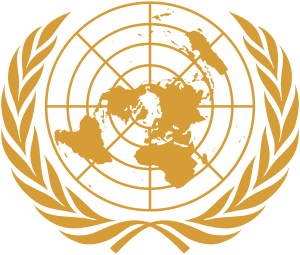 | |
| Abbreviation | MINUSMA |
|---|---|
| Formation | 25 April 2013 |
| Type | Peacekeeping Mission |
| Legal status | Active |
Head | Mahamat Saleh Annadi, Special Representative[1] |
Parent organization | United Nations Security Council |
| Website | un.org/en/peacekeeping/missions/minusma/ |
The United Nations Multidimensional Integrated Stabilization Mission in Mali (Mission multidimensionnelle intégrée des Nations unies pour la stabilisation au Mali, MINUSMA[2]) is a United Nations peacekeeping mission in Mali. MINUSMA was established on 25 April 2013 by UN Security Council Resolution 2100 to stabilise the country after the Tuareg rebellion (2012).[3] It was officially deployed on 1 July.
History
In 2012, Tuareg and other peoples in northern Mali's Azawad region started an insurgency in the north under the banner of the National Movement for the Liberation of Azawad. After some initial successes and complaints from the Malian Army that it was ill-equipped to fight the insurgents, who had benefited from an influx of heavy weaponry from the 2011 Libyan civil war as well as other sources, elements of the army staged a military coup d'état on 21 March 2012.[4] Following the coup, the rebels made further advances to capture the three biggest cities in the north: Gao, Timbuktu and Kidal.[5] Following economic sanctions and a blockade by the Economic Community of West African States (ECOWAS) on the country, a deal, brokered in Burkina Faso by President Blaise Compaoré under the auspices of ECOWAS, was signed that would see Amadou Sanogo cede power to Dioncounda Traoré to assume the presidency in an interim capacity until an election is held.[6]
On 1 July 2013, 6,000 of a future total of 12,600 UN peacekeeping troops officially took over responsibility for patrolling the country's north from France and the ECOWAS' International Support Mission to Mali (AFISMA). The group is expected to play a role in the 2013 Malian presidential election.[7] The force is the third largest UN peacekeeping force in operation in the world.[8]
Organisation and forces
Its headquarters are in the Malian capital, Bamako. Military intelligence will be evaluated by ASIFU (All Sources Information Fusion Unit).[9]
The force is led by Danish Major General Michael Lollesgaard.[10]
Current contributors are:[11]
-
 Bangladesh
Bangladesh -
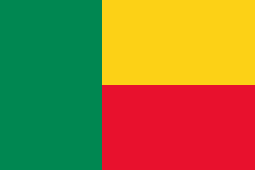 Benin
Benin -
 Bosnia and Herzegovina
Bosnia and Herzegovina -
 Burkina Faso
Burkina Faso -
 Chad
Chad -
 China
China -
 Ivory Coast
Ivory Coast -
 Denmark
Denmark -
 Dominican Republic
Dominican Republic -
 Egypt
Egypt -
 El Salvador
El Salvador -
 Estonia
Estonia -
 Finland
Finland -
 France
France -
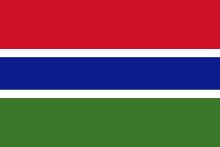 Gambia
Gambia -
 Germany - Intelligence duties from July 2016. IAI Heron UAV deployed from November 2016.[12]
Germany - Intelligence duties from July 2016. IAI Heron UAV deployed from November 2016.[12] -
 Ghana
Ghana -
 Guinea
Guinea -
 Guinea-Bissau
Guinea-Bissau -
 Italy
Italy -
 Jordan
Jordan -
 Kenya
Kenya -
 Liberia
Liberia -
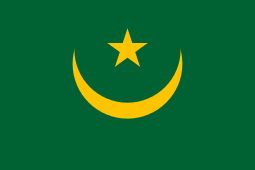 Mauritania
Mauritania -
 Nepal
Nepal -
 Netherlands
Netherlands -
 Niger
Niger -
 Nigeria
Nigeria -
 Norway - 18 analysts and officers and administrative personnel [13]
Norway - 18 analysts and officers and administrative personnel [13] -
 Portugal - 47 military personnel[14]
Portugal - 47 military personnel[14] -
 Rwanda
Rwanda -
 Senegal
Senegal -
 Sierra Leone
Sierra Leone -
 Sweden
Sweden -
 Switzerland
Switzerland -
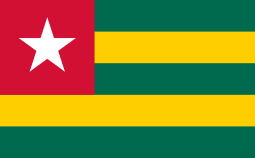 Togo
Togo -
 United Kingdom
United Kingdom -
 United States
United States -
 Yemen
Yemen
Incidents
In October 2013, a suicide bomber attacked the Chadian soldiers resulting in two dead soldiers.[15]
On 13 December, two Senegalese peacekeepers were killed at a bombing outside the Malian Solidarity Bank in Kidal a day before the second round of the Malian parliamentary election, 2013.[16] In October 2014, 10 soldiers were killed—nine from Niger and one from Senegal near Gao and Kidal, respectively—bringing the total number of dead soldiers from the mission to 21 with dozens more wounded. It also preceded Malian Foreign Minister Abdoulaye Diop calling for the UNSC to send a rapid deployment force to the country claiming that there was an increase in drug traffickers and Islamist fighters. U.N. Peacekeeping chief Hervé Ladsous also spoke to the UNSC from Bamako, where he attend a memorial service for the dead soldiers. He added that a combination of factors has led to the increase in attacks on U.N. troops, including the drawdown of French forces and a perceived lack of Malian security forces, as such MINUSMA, being the main international presence in the area, was a target. He further noted that the UN was no longer working in a peacekeeping environment, but sought to increase protection of the mission’s staff, equipment and bases.[17]
A total of at least 44 troops have been killed due to hit and run attacks and bombings by Islamist groups during the ongoing conflict. [18]
See also
References
- ↑ http://www.un.org/en/peacekeeping/missions/minusma/leadership.shtml
- ↑ "Mission multidimensionnelle intégrée des Nations Unies pour la stabilisation au Mali (MINUSMA), French language webpage on UN website for the mission". www.un.org. United Nations. 2013-04-25. Retrieved 2013-10-27.
- ↑ "United Nations Multidimensional Integrated Stabilization Mission in Mali (MINUSMA)". www.un.org. United Nations. 2013-04-25. Retrieved 2013-07-03.
- ↑ Look, Anne (25 March 2012). "Uncertainty Reigns in Mali". Voice of America.
- ↑ "Timbuktu bombarded as Mali constitution 'restored'". Hindustan Times. 1 April 2012.
- ↑ "Mali junta says power transfer 'within days'". Al Jazeera.
- ↑ "UN takes over Mali peacekeeping mission". Al Jazeera.
- ↑ http://www.economist.com/news/middle-east-and-africa/21580472-pursued-one-place-west-africa-extremists-pop-up-somewhere-nearby-first The UN and Mali: Secure the Sahara, if you can
- ↑ Rune Thomas Ege. "Norske soldater på plass i Mali". VG. Retrieved 16 November 2014.
- ↑ "Secretary-General Appoints Major General Michael Lollesgaard of Denmark Force Commander of UN Multidimensional Integrated Stabilization Mission in Mali". UN.org. Retrieved 23 October 2015.
- ↑ http://www.un.org/en/peacekeeping/missions/minusma/facts.shtml
- ↑ AirForces Monthly. Stamford, Lincolnshire, England: Key Publishing Ltd. September 2016. p. 26.
- ↑ "Archived copy". Archived from the original on September 4, 2014. Retrieved September 3, 2014.
- ↑ http://www.emgfa.pt/pt/comunicados/2015-01
- ↑ "UN troops killed in Mali suicide attack". Retrieved 16 November 2014.
- ↑ "Car bomb kills UN peacekeepers in Mali". Retrieved 16 November 2014.
- ↑ "Mali Calls for Rapid Reaction Force to Quell Unrest". VOA. Retrieved 16 November 2014.
- ↑ http://www.un.org/en/peacekeeping/missions/minusma/facts.shtml